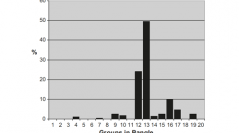

 Comptes Rendus Palevol
11 (2-3) - Pages 191-202
Comptes Rendus Palevol
11 (2-3) - Pages 191-202Considering anatomical and archaeological aspects of Homo erectus, it is likely that meat of vertebrates was an important part in its diet. Unfortunately, no or hardly any information is available for Java Man (Homo erectus). Therefore, in this paper, the Number of Identified Specimens (NISP) of five Middle Pleistocene Javanese sites are examined, and the Minimum Number of Individuals (MNI) from two of them are calculated, to acquire information about the possible ecological role of Javanese Homo erectus. Although one has to be extremely careful with the interpretation of fossil bone assemblages in order to try to gain some insight about the abundance of species in palaeocommunities, it is argued that both the NISP and the MNI indicate that the bone accumulations reflect at least two trophic levels in the ecological pyramid, that of primary and secondary consumers. The occurrences of the remains of Homo erectus are comparable with the quantity of secondary consumers, i.e., large carnivores. This could suggest that this species had, as an omnivore, a carnivorous niche, in Java.
Middle Pleistocene, Javanese fossils, Homo erectus, Palaeocommunity, Trophic levels, Carnivorous niche